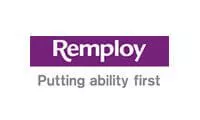If ESG is implementing a new service desk, then new ‘direct dial in’ (DDI) telephone numbers are assigned to the process. For convenience the DDIs are created locally to the geographies that the end-users are located in. The end-users simply call the numbers and are routed to the IVR.
If ESG is onboarding or co-hosting an existing system, then the client has the choice to maintain the use of their existing IVR or to avail themselves of ESG’s system.
If the client prefers to continue to use their existing system, then, by simply creating and forwarding details of extensions to ESG, the new support personnel at ESG can receive incoming calls. Our systems engineers can assist in this and any aspect of amendment of an existing PBX.
To redirect an existing DDI, or a block of existing DDIs, to ESG’s system we migrate the existing DDIs to our system using ‘number porting’. This option can be easily accomplished but does require the cooperation of the client’s current telephony provider.
Occasionally it is not possible to port a particular number, but ESG will advise where this is the case. In these instances, we can redirect the existing DDI(s) to new DDI(s) which will direct to ESG’s IVR. The calls will be considered as outbound calls by the existing service provider and may occur charges. An alternative is that ESG can set up new DDI(s) for the end-users which will direct to ESG’s IVR.









